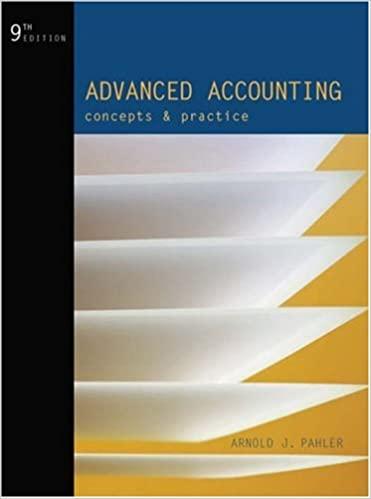Determining Financial Reporting Impact of a Merger under the Purchase Method (Debt Ratio and Return on Investment)
Question:
Determining Financial Reporting Impact of a Merger under the Purchase Method (Debt Ratio and Return on Investment) PDQ Inc. is contemplating a business combination with Sprint Inc. on 1/1/06. Selected information follows:
1. PDQ will issue 10,000 shares of its $1 par value common stock to Sprint in exchange for 100%
of Sprint’s assets.
2. PDQ will assume all of Sprint’s liabilities.
3. PDQ will account for Sprint’s operations as a decentralized division to be evaluated as a profit center.
4. Other financial information: PDQ Sprint Book Values Assets LiabiLities .
. $3,000,000 2,000,000 $1,300,000 1,000,000 Current Values Assets Current Common Liabilities .
market stock .
shares price of outstanding common stock .
.
4,000,000 2,000,000 $80 40,000 1,700,000 1,000,000 $35 20,000 5. The expected future annual net income of the acquired business is Under Under pooling purchase of accounting interests accounting .
. $90,000 80,000 6. For 2005, PDQ reported $150,000 of net income, all of which was distributed as dividends at the end of 2005.
1. Calculate the issuing company’s debt-to-equity ratio:
a. Before the combination.
b. After the combination on a consolidated basis.
2. Calculate PDQ’s return on equity (ROE) for 2005.
3. Calculate the issuing company’s expected annual return on its investment (AROI) in Sprint for 2006.
4. Calculate PDQ’s expected ROE for 2006 (combined earnings of both operations) assuming that PDQ expects to earn $150,000 for 2006 from its own separate operations.
Step by Step Answer:






